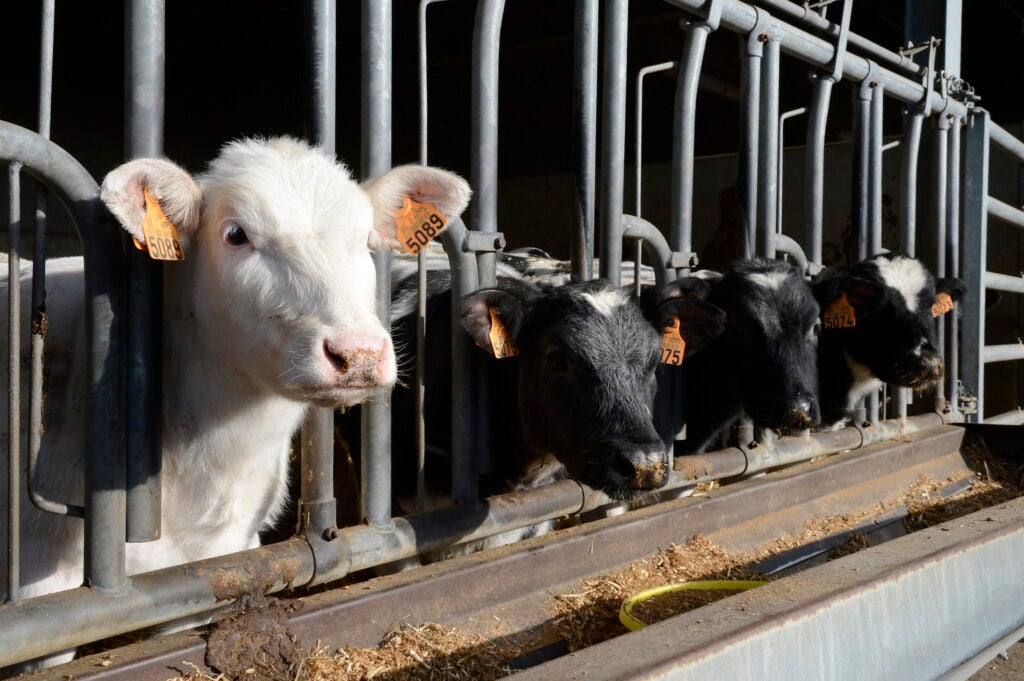By Peri Rosenstein and Nicole Jenkins
Methane emissions are a potent greenhouse gas, warming the climate more than 80 times faster than carbon dioxide on a 20-year timescale. Rapidly and significantly reducing methane is the most effective way to reduce the rate of warming, especially over the next few decades.
Agriculture is responsible for 40% of human-caused methane, which means it’s also an area where methane reductions would have a wide-reaching impact. In fact, reductions in enteric methane emissions, or the methane gas released when ruminant animals like cows burp, are a critical component of efforts to stabilize the climate.
For food companies with beef and dairy in their value chains, reducing enteric methane emissions is essential to delivering on their climate strategies to achieve ambitious targets and safeguard their value chains against the impacts of a changing climate. However, we currently do not have enough scientifically proven and commercially available solutions to sufficiently reduce enteric methane emissions.
We need a suite of products and strategies that have four key qualities: they effectively reduce enteric methane emissions without causing negative environmental tradeoffs, are safe for humans and animals, can be widely adopted by the industry and are accepted by consumers.
There is a critical need for continued innovation to provide a variety of solutions that meet these criteria and can work for different production systems, such as grazing animals where daily feed additives are not practical.
How to close the gap
To close the innovation gap and ensure enteric methane-inhibiting solutions are widely available as soon as possible, we need rigorous scientific assessment of all potential tools and solutions.
Many critical, unanswered questions remain. First, we need to explore what the safety and efficacy of these products is and how it might change with long-term administration. We should also ask whether a cow’s diet affects the efficacy and whether there are early-life interventions or treatments provided at a young age that could be utilized.
Building a robust body of scientific evidence for many enteric methane-inhibiting products will require extensive scientific research which will require significant funding. Yet federal support for this type of research is very limited.
A recent study by Breakthrough Institute found that while agricultural emissions represent 10% of US annual greenhouse gas emissions, federal research and development investments in agricultural climate solutions remain 35 times smaller than clean energy research and development investments. Overcoming this investment gap will require research that is funded and conducted by partnerships between different sectors, including public and private entities.
For example, solutions providers (start-ups or established animal health pharmaceutical companies) may pay academic institutions to conduct the necessary studies due to the professional expertise and facilities available. If the research is on a specific product, it is appropriate that the company trying to bring the product to market invest in the research and development of the product.
Similarly, food companies seeking to address methane in their value chains and are thus reliant on the development of enteric solutions, should also explore means of supporting needed research and piloting products as they receive approval. The public sector, such as the U.S. Department of Agriculture, may serve as research capacity through scientists and facilities at Agricultural Research Service sites. The USDA can also provide funding for research through programs like Conservation Innovation Grants and Agriculture and Food Research Initiative grants from the National Institute of Food and Agriculture.
Partnerships are essential
Public and private sector prioritization of investments in research on enteric methane-inhibiting products is essential for overcoming the innovation gap. And there is a long history of these partnerships being executed successfully.
One of the keys to their success is that the appropriate safeguards must be maintained to ensure rigorous scientific conduct and data transparency. The funding cannot in any way influence or be tied to the results of the studies.
There are many examples of safeguards that should be included in such partnerships, including selecting principal investigators for the studies based on their expertise and ability to conduct the research according to the appropriate guidelines and standards. Study data should also undergo a thorough review by the Food and Drug Administration’s Center for Veterinary Medicine if the studies are intended for regulatory approval as an enteric methane-inhibiting product. Likewise, complete methods and all findings should be published in a peer-reviewed publication for public access if the study is not intended for regulatory purposes.
Funding and collaboration between both the private and public sectors combined with rigorous scientific assessment of products is an essential combination for closing the enteric methane emissions innovation gap. This type of collaboration will make it possible to establish and implement well-researched methods for mitigating enteric methane emissions — an essential step in empowering farmers and ranchers to address climate change.










